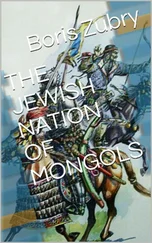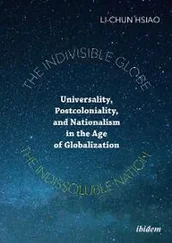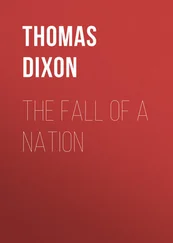Human mobilities effectively may include all kinds of movements by people in time and space: from the shortest trip to a local corner shop to a lifelong transcontinental relocation. What is conventionally designated ‘immigration’ is only a tiny fraction of a continuum of the spatial movements that states seek to govern by classifying and making them legible in various ways. Some, like walking to the shop, are almost entirely invisible to the state and are usually disregarded. Others, like immigration, involve international border crossing and so are highly visible and pertinent to it. Border crossing itself is a broad continuum: from tourism and trade or business visits at one end, through cross-border commuting and family life, to various forms of immigration, asylum seeking and irregular migration at the other. All these forms need governing, although governance can be porous and control a matter, much of the time, of ‘smoke and mirrors’ (Massey, Durand and Malone 2002). At any given border – for example, the most dramatic population divide in the modern world, which lies between San Diego and Tijuana – the daily number of ‘immigrants’ crossing is tiny compared to all such other crossings. The Westphalian conventions of space and territory quickly make most of these crossings invisible politically as the focus narrows on wanted and unwanted ‘migration’. Moreover, a conventional notion of time is also a factor in delimiting those crossings that count as ‘immigration’ – as noted previously, the one year of residence rule in international statistics on flows and stocks. At the same time, other categorical definitions may stretch this: for example, some cases of temporary migration – student migration, guest worker systems, trade in services, indentured labour – are not counted as ‘immigration’ or subject to ‘integration’ until some other formal line is crossed (see also McNevin 2019).
Asylum seeking and refugee migration have long had their own governing logic – anchored in the specific statuses established by post-war international refugee law – although they have been frequently seen to collapse into ‘immigration’ in recent debates (Gibney 2004). Internal and cross-border displacements, and various forms of temporary and indentured labour mobility – often far from the western world as receiving society – further complicate the picture (Koser 2016). Ordinarily, these are not subject to integration thinking.
Refugee settlement in the West, however, clearly has become a central subject for integration thinking, which in the past has been more applicable to the long-term settlement of labour migrants and their families. Refugee migration has become the principal form of immigration in many countries which are otherwise now extremely restrictive on forms of ‘economic’ migration. Integration of refugees is seen to be an imperative and strongly progressive goal – it is sometimes seen as less encumbered by the issues of race and colonialism that characterize post-empire labour migrations (Grzymala-Kaslowska and Phillimore 2017). Yet the concern with refugee integration contradicts the principle of temporary protection and potential future return – the removal of oppressive regimes and the rebuilding of failed states – and in this sense marks a further dissipation of the post-war refugee regime. A whole new wave of integration model building – largely overlooking earlier critiques of linear, implicitly colonial, integration thinking – has followed the crisis responses in Europe and the developed world to recent mass refugee and undocumented migration (Ager and Strang 2008; Donato and Ferris 2020). The migration status of many of the populations attempting to desperately enter Western Europe across the Mediterranean or via border passes in Central Europe is highly unclear (Crawley and Skleparis 2017). The determinate relations of economic and political domination and inequality between receiving and sending societies are lost in the focus on the moral response of the West to obligingly welcome claimants, each on individual grounds (Mayblin 2017). Given these particular aspects, refugee integration may play out differently from post-colonial labour migration or other transnational forms of movement but is no less problematic.
A further complication is added by noting that international migration subject to integration is also heavily distinguished from population movements that take place within and across the territory of nation-states. The canonical distinction between internal and international migration has long been criticized by geographers in migration studies (King and Skeldon 2010). It is often an arbitrary distinction which reifies the international border when both/all are forms of spatial movement, simply viewed. However, normatively, the modern nation-state clearly views things differently. In the contemporary view, internal populations are already integrated as nationals; they are not at all subject to the same linear immigration to citizenship template, let alone the same nation-building symbolism as ‘immigrants’. In historical terms, this distinction is clearly arbitrary and a figment of the late modern world (Harzig et al. 2009) – in the past, it did not apply to many regional periphery-to-urban migrations within incomplete nation-states or across macro-regional spaces (Moch 2003). Their migration patterns might, in that view, resemble those of immigrant foreigners – as do contemporary internal migrants moving across regions in contemporary China, for instance (Xie, Leng and Ritakallio 2016). Here, a nation-building ‘integration’ perspective might work, even in the absence of immigrants. As we will see, the ‘integration’ of people assumed already to be ‘natives’ is often left unexplored in discussions of immigrant or minority integration.
On the other hand, different concerns may indeed apply to migrations between countries within empire-scale systems of governance, or across macro-regional common markets, which also do not (or should not necessarily) count as ‘immigration’. It can be argued that free-moving EU citizens within the single market space of the European Union, who retain their own nationality and enjoy a different kind of (European) citizenship as the basis of residency, rights and recognition, are not subject to integration when they settle in another country – until perhaps circumstances change, a border crosses them, and they become ‘immigrants’ needing to think about permanent settlement (Gonzales and Sigona 2017). Other historians would further complicate this and de-naturalize the normality of the narrow sliver of migration and mobilities that is viewed as state-sanctioned immigration in the contemporary view: for example, the movement of settler colonials within empires (Bhambra 2014), or the ongoing movement of expatriates living and working for corporations around the world (Kunz 2020). These movements all have consequences that fall outside conventional patterns of migration, settlement, integration and citizenship. At the other end of the scale, other anomalous cases include the international movement of labour as slavery or the forced migration of stateless persons held in spaces outside receiving state jurisdiction (McNevin 2011).
The shrunken post-colonial nation-states that as empires were built on mass population movements to and from the colonies, outside any immigration-to-citizenship model, have worked hard to reduce the many historical and contemporary anomalies this produced for the Westphalian view. One recent example I will return to later illustrates their ongoing effects. British subjects from the West Indies and South Asia who moved across the empire to live and work in Britain in the immediate post-war period did not move as ‘immigrants’; they only became ‘immigrants’ retrospectively with changes in nationality law and a momentous historical rethinking of nationhood from boundless global empire to bounded European nation-state and sovereign island (Bhambra 2016). Victims of the Windrush scandal have discovered the power of the modern political demography of immigration and integration self-imposed on the sovereign United Kingdom, when they were unable to prove their long-term right to live in Britain for lack of citizenship papers (Yuval-Davis, Wemyss and Cassidy 2019).
Читать дальше











